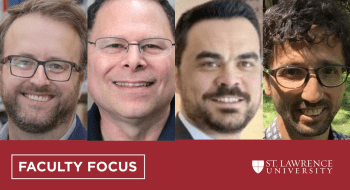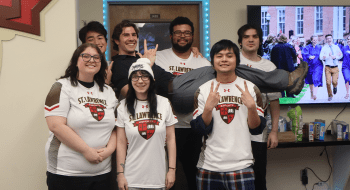St. Lawrence University has received a National Science Foundation grant to acquire a new high-performance computer that will allow faculty and students to conduct research in computer science, statistics, biology, chemistry and other disciplines with high-performance computing needs.
The grant, totaling $236,477, will be used to acquire a new high-capacity computer used by a variety of academic departments. Led by Ed Harcourt, Charles A. Dana Professor of Computer Science and director of the engineering combined program, the project team included 14 St. Lawrence faculty as well as three external users, including a partner at Stanford University.
“This will replace an existing computer that NSF funded about 10 years ago,” Harcourt explained. “It will be used to support faculty research across different academic disciplines who need a lot of computer power to do their research.”
The proposal outlines research in areas such as artificial intelligence, quantum chemical calculations, chemotherapeutic drugs, bioinformatics, gene regulation, and more. According to the project proposal, “This research, impossible to execute using desktop computers, will be carried out at an order of magnitude faster than with current computing infrastructure, and the memory capacity of the requested equipment will allow for larger data sets by two times over the current computing infrastructure.”
St. Lawrence will work with Red Barn Computers in October to build a rack-mounted computer that will feature an 18-node cluster with more than 400 processors and 2.6TB of RAM (random-access memory). Each node will include 24 processors, and it will feature two NVidia Tesla graphic cards for machine learning.
Harcourt said St. Lawrence also plans to work with SLY Media Networks out of Pulaski, New York, on scheduling usage of the computer and to manage load balancing. The computer would also be made available to other nearby colleges as projects warrant.
Several of the NSF reviewers noted that the new computer will significantly increase St. Lawrence’s research infrastructure and will enable participation of students in the CSTEP and McNair programs as well as the Liberal Arts Science Scholars program, which received a $1 million NSF grant this summer.
“NSF’s major research initiative (MRI) is very competitive category with only about a 10 percent success rate,” Harcourt said. “So this is quite a win for St. Lawrence, our faculty and our students."



